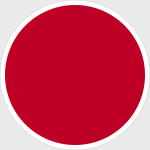Dragon DRR60441 Imperial Japanese Army Type 95 "Ha-Go" Light Tank - Koushurei Tank School, North China, 1941 (1:72 Scale)
"It goes without saying that when survival is threatened, struggles erupt between peoples, and unfortunate wars between nations result."
- Hideki Tojo, Prime Minister of Japan during most of World War II
 The Japanese tankettes were in reality auxiliary vehicles, designed and adapted for a variety of support tasks. The true battle tanks were grouped into two different categories, light and medium. The most numerous light tank in December 1941, and in fact throughout most of the war, was the Type 95 or "Ha-Go." In fact, this was probably the most numerous type of tank in the Japanese forces at the time of Pearl Harbor. The Ha-Go weighed seven and a half tons, and accommodated a crew of three.
The Japanese tankettes were in reality auxiliary vehicles, designed and adapted for a variety of support tasks. The true battle tanks were grouped into two different categories, light and medium. The most numerous light tank in December 1941, and in fact throughout most of the war, was the Type 95 or "Ha-Go." In fact, this was probably the most numerous type of tank in the Japanese forces at the time of Pearl Harbor. The Ha-Go weighed seven and a half tons, and accommodated a crew of three.
The Type 95 was not well-protected, with armor to a maximum thickness of only 12mm, and not particularly well-shaped (and, of course, a round which penetrated the Ha-Go's crowded fighting compartment was almost certain to hit part of a crewman's body and/or something which would explode or catch fire). The Ha-Go's best feature was its mobility, capable of a respectable 28mph on a good road. Furthermore, there was one design area in which the Japanese most definitely got things right, and that was in the provision of diesel engines for their battle tanks, including the Type 95.
While Dragon Armor has released this type of Ha-Go tank before (Item No.60428), the earlier model depicted a vehicle involved in combat in the Philippines in 1942. This new item possesses some recognizable differences, the chief one being the modified running gear configuration. This model contains an additional road wheel in between the main road wheels, with the bogeys and wheels being completely new. Even the tiny track links are accurately replicated in miniature. The tank on which this item is based served with the Koushurei Tank School in Manchuria, northern China in 1941. The tank model is finished in a typical and colorful camouflage paint scheme as seen in wartime photos. The tank also has Japanese characters painted on the turret that add some individual character. Although small, this fully built-up model of a Japanese tank is extremely well detailed.
Sold Out!
Dimensions:
Length: 4-inches
Width: 1-inch
Release Date: September 2011
 Historical Account: "Manchurian Incidents" - The Second Sino-Japanese War (July 7th, 1937 - September 9th, 1945) was a military conflict fought primarily between the Republic of China and the Empire of Japan. From 1937 to 1941, China fought Japan with some economic help from Germany, the Soviet Union (1937 - 1940) and the United States. After the Japanese attack on Pearl Harbor (1941), the war merged into the greater conflict of World War II as a major front of what is broadly known as the Pacific War. The Second Sino-Japanese War was the largest Asian war in the 20th century. It also made up more than 50% of the casualties in the Pacific War if the 1937 - 1941 period is taken into account.
Historical Account: "Manchurian Incidents" - The Second Sino-Japanese War (July 7th, 1937 - September 9th, 1945) was a military conflict fought primarily between the Republic of China and the Empire of Japan. From 1937 to 1941, China fought Japan with some economic help from Germany, the Soviet Union (1937 - 1940) and the United States. After the Japanese attack on Pearl Harbor (1941), the war merged into the greater conflict of World War II as a major front of what is broadly known as the Pacific War. The Second Sino-Japanese War was the largest Asian war in the 20th century. It also made up more than 50% of the casualties in the Pacific War if the 1937 - 1941 period is taken into account.
Although the two countries had fought intermittently since 1931, total war started in earnest in 1937 and ended only with the surrender of Japan in 1945. The war was the result of a decades-long Japanese imperialist policy aiming to dominate China politically and militarily and to secure its vast raw material reserves and other economic resources, particularly food and labor. Before 1937, China and Japan fought in small, localized engagements, so-called "incidents". Yet the two sides, for a variety of reasons, refrained from fighting a total war. In 1931, the Japanese invasion of Manchuria by Japan's Kwantung Army followed the Mukden Incident. The last of these incidents was the Marco Polo Bridge Incident of 1937, marking the beginning of total war between the two countries.





 Japanese Type 95 Light Tank
Japanese Type 95 Light Tank 

 Type 95
Type 95